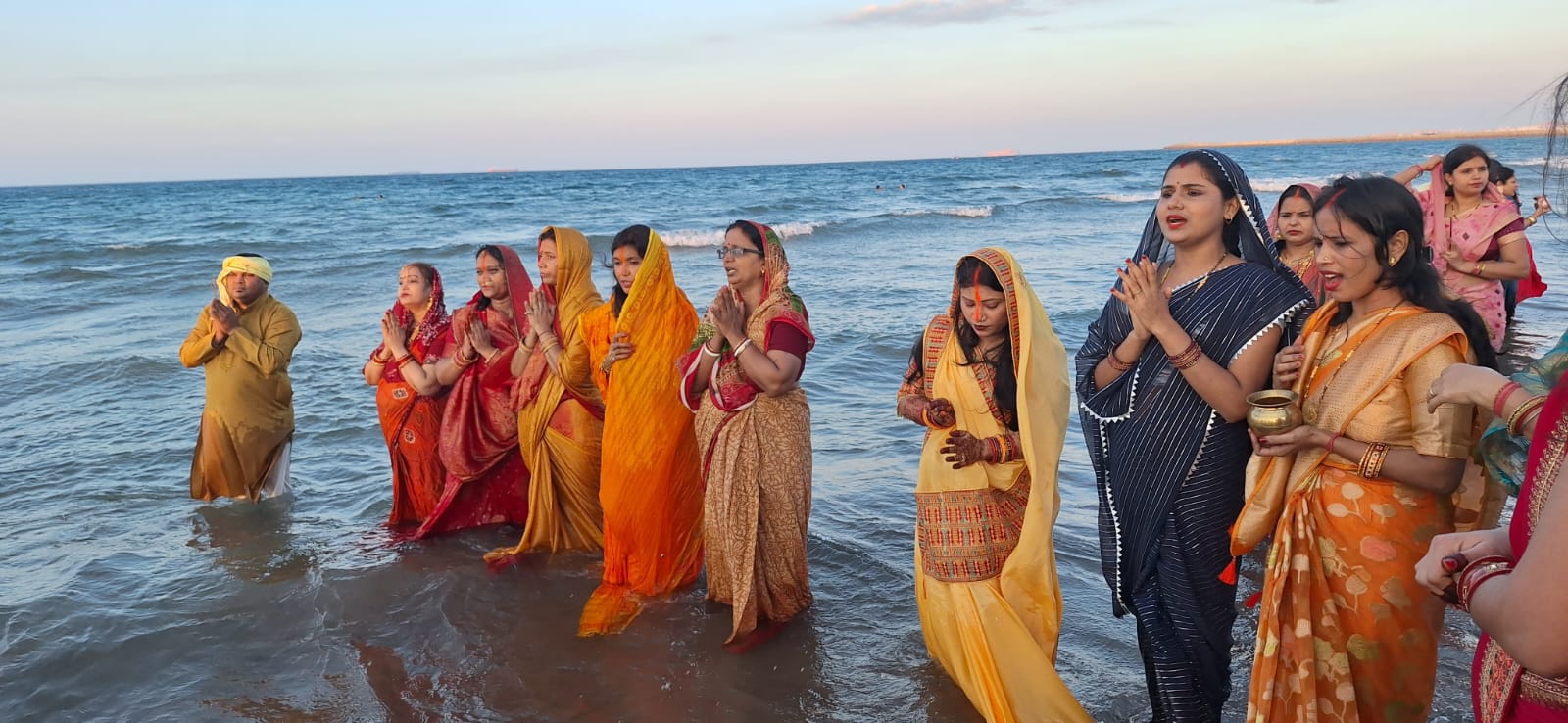PRAVASISAMWAD.COM
Dark clouds hover over the world of Terracotta as modernization threatens to swallow the traditional craft.
“Oh for the sheer joy of sipping chai (tea) in a kulhar (mud cup),” my adolescent daughter gushed in absolute bliss. She had come home after a long span, and going to this non-descript tea stall, had been high on her agenda. Found similar sentiments flowing a few days back at a party where rabri (traditional sweet) was served in small clay plates and curd in small matkis (pitchers). Some of the luncheon dishes like the variety of daal (pulses) too were in urns made of clay, even as piping hot ‘Kesar doodh’ (saffron milk), came in tall clay glasses. “What a beautiful ethnic theme,” commented one of the guests, while still others wondered where to get such stuff to replace the usual and mundane crockery.
But then the craze apart, the reality is that the demand for clay pottery and showpieces has been on a steady decline for some time now. The market has largely shifted online that is flooded with marketing giants selling a variety of clay products, majority of which are not dependent on traditional potters. They carry enticingly fancy names and are priced exorbitantly too.
All this while the kumhars (traditional terracotta potters) languish in penury. Day in and day out, they find themselves up against demanding bargaining traders who even do not release payments on time, but after acquiring, they sell these pieces of art and pottery to emporiums in the country and abroad at prices multiplied many times. A neat profit accrues as they finally reach buyers willingly paying the further jacked up showroom prices.
Remember traversing a long stretch that alternated between dirt track and paved roads to reach Aurangabad village; the much talked about the land of Terracotta of North India in the early ’90s. The cluster includes Bharwalia, Langadi Gularia, Budhadih, Amawa, Ekla among others. With Gorakhpur Block towards the west, the village as I recall, now had artifacts, finished as well as unfinished products strewn and stacked inside and outside of most dwellings. One would see ornate horse heads piled alongside small and big decorated elephant pieces, while the bigger mud sculptures were carefully made to stand inside. Today the pace of advancement has quietened down the complete look and feel. Some, like Anand Vishwakarma, continues to turn the potters’ wheel for the customary items like surahi (earthen pot) gullaks (piggy banks) and kulhars though the young boys and girls in the neighbourhood have given up the trade and migrated to the adjoining cities for work. In most of the villages, wheels have stopped rotating. While some have been dumped in the backyards, others are left to rust in storerooms.
Memories of the bygone era flood my mind. Come summers and a range of clay pots, surahis of different sizes, matkas and gharas or pitchers would arrive home. Must-haves for everybody, it was sheer excitement for me and my visiting cousins during the vacations, as each would be allotted a small matki with a clay plate to cover. The surahis looked regal with the floral design that encircled the bulging middle, while the neck stood long and straight. Not surprising at all that it inspired poets to draw a parallel when describing the shapely neck of a damsel. “Surahidar gardan,” is what they penned.
But then the craze apart, the reality is that the demand for clay pottery and showpieces has been on a steady decline for some time now. The market has largely shifted online that is flooded with marketing giants selling a variety of clay products, majority of which are not dependent on traditional potters.
The gharas would be covered with a piece of cotton cloth that my grandmom would ensure was kept wet, while the wooden stool with the seat hollowed out ensured that the pitcher did not roll over. A small glass suspended from a long stick of steel was inserted to get the super earthy scented cool water that was ever so soothing. A welcome respite from the sweltering heat indeed, as the sun beat down mercilessly and the air turned hot, converting into the unbearable tropical summer wind called the loo in the months of May and June.
But by and by, as modernization took over and the fridge moved from being a luxury to a necessity, this simple yet exotic pleasure of drinking water from the ethnic earthen pot was replaced by the instantly chilled option. The naturally cooled and purified water is also not known to lead to complaints of sore throat. The mixture of sand and gravel helps fight against pathogens or harmful bacteria present in impure water, while the charcoal in the pot helps to remove any bad odour. The comfortably cool water has a great earthy taste and quenches thirst like no other.
“We wish to carry on doing this but our earnings come in good only for two-three months in a year,” laments Sangeeta Prajapati.
“Besides, the clay is available only in May, June. The ponds with such soil should be leased to potters,” pipes in Vikram Prasad Prajapati . “Besides, sometimes, now I have to sell directly to customers. Things are becoming so difficult as the demand has clearly decreased,” he goes on to add.
Thankfully the Uttar Pradesh State Government has included Aurangabad in ‘one district-one product’ (ODOP) mission from Gorakhpur, and terracotta products from here will soon get Geographical Indication (GI) tag that will promote the trade in both the national and overseas markets. To boost quality and improvement in their work, with the intention to integrate their craft with technology, the government is also stepping in to provide electricity operated wheel, foot machine, etc.
But Aurangabad, a village where 12 families boast of their members being either National or International awardees, 36 Dalit families specialise in terracotta handicraft, their mainstay, the missing year-round market has taken its toll. The consumer world needs to get back to its roots – the gullaks, the gharas, the surahis. Relax and enjoy with kulhar ki chai!











